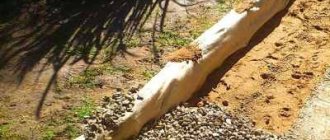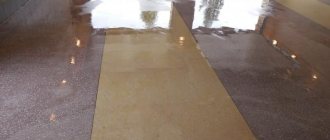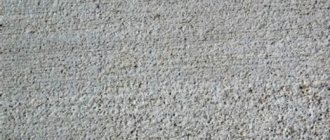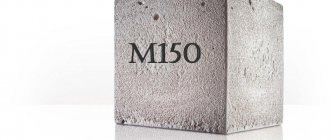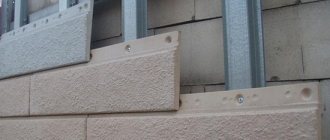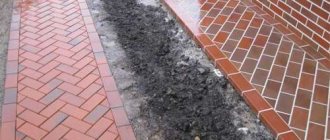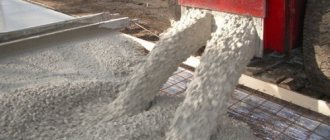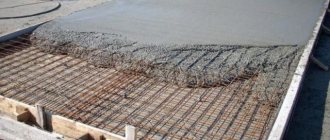Over time, any building structure wears out, and there is a need to strengthen it. It is performed in traditional and modern ways. A simple and reliable option is external reinforcement. Today, artificial carbon fiber is used for it.
The material has:
- high strength;
- high modularity;
- linear elasticity.
It is used in two types - tape and canvas. Carbon fiber is attached to the structure from the outside or inside with special compounds:
- epoxy;
- polymer cement;
- epoxy polyurethane.
Causes of concrete destruction
Artificial stone is a durable building material, but it can lose its consumer qualities due to high loads and deviations from the technology for creating the mixture and pouring. Protection of concrete should begin at the construction stage, when additional additives are introduced into the composition during manufacturing, depending on the specific construction conditions. During operation, engineers conduct periodic and unscheduled inspections of the facility.
The appearance of shrinkage cracks and the appearance of mold on concrete signal problems in the monolith. Protection is carried out by external methods, the load-bearing capacity increases and concrete structures are strengthened from the outside. An important aspect is the choice of competent methods and modes for removing concrete defects.
In practice, there are 3 reasons for the destruction of concrete structures:
- physical causes of destruction. Freezing/thawing cycles of water, which enters the pores and creates cracking stress, gradually increases during operation. As a preventive measure, it is necessary to reduce microporosity at the stage of mixing the solution by adding air-entraining and frost-resistant additives;
- chemical causes of destruction. During the reaction between the concrete surface and the environment, reactions occur that lead to crumbling, delamination and cracking of the pouring surface. The extent of destruction depends on the concentration of carbon dioxide in the air and the level of industrial pollution. Often the operating regulations for a concrete object are violated, which leads to the appearance of cracks in the concrete. Research will be required to determine the presence of carbonate in the material, which will indicate the presence of harmful effects;
- mechanical causes of surface destruction. For example, damage to concrete floors in industrial facilities as a result of constant and high loads. In places where the flow of people is maximum, defective sites may appear over time. The durability of concrete is enhanced by adding additional protective agents to the surface layer before use: mastics, varnishes and protective films.
Often all three reasons appear simultaneously, so the repair mixture must include the necessary formats for protecting the structure. When concrete sets and hardens, it is necessary to fulfill the following requirements: pour the surface, use vibration equipment and cover the pouring with a protective film. Concrete should be poured in layers, properly reinforced and not used until it reaches working strength. It is necessary to take into account the concrete surface modulus, which is the ratio of the surface temperature to the internal temperature of the entire volume.
Destruction of concrete: methods. Use of powder. Application of acid mixture
Often, during the construction or reconstruction of a facility, it is necessary to first destroy old reinforced concrete structures. But the fact is that this material has increased strength, otherwise it would not be able to support the structure. Dismantling in this case is a difficult task, so several options can be used, including destruction of concrete with ultrasound or chemicals.
Dismantling of concrete products with diamond saws
What methods can protect concrete?
The appearance of swelling, cracking and cracking of concrete can be eliminated in the following ways:
- Ironing is an effective method for preserving concrete pouring. A special powder consisting of liquid glass, corundum, quartz and other additives is rubbed onto the frozen surface. This mastic is applied without special equipment, manually, in small layers of 2 mm. Sealing cracks can be done several times sequentially after the previous layer has dried;
- injection carried out by engineering specialists. Using special equipment, the pores are filled with a composition that prevents moisture from entering the structure and possible corrosion of the reinforcement;
- Carbon fiber reinforcement involves bonding protective materials to epoxy resin. Such strips of building fibers give the concrete additional strength and extend its service life without repair.
To obtain high-quality concrete, you will need to follow the recipe and technology for pouring volumes. If defects appear, they cannot be ignored; repair and restoration work will be required.
Return to list
Find out the cost of delivering concrete to your site
from our manager by phone or through the request form
Physical factors
Among the physical factors affecting the strength of concrete, shrinkage and negative temperature conditions should be highlighted.
Shrinkage is divided into two types:
- plastic - observed in the plastic stage, that is, during or in the first days after laying concrete, and is caused by the rapid release of the moisture contained in it. At the same time, dips, microcracks or cracks form on the surface of the material;
- hygrometric - occurs in the first months after concrete sets.
Figure 3. Result of plastic shrinkage of concrete
The main method of combating plastic shrinkage is to cover freshly laid concrete with a layer of waterproof film, apply materials that create a protective film, or spray with water for several days. Hygrometric shrinkage can be avoided by using additives that reduce the water-cement ratio (W/C).
The freezing and thawing cycle is the process of water penetrating into concrete, its subsequent freezing with an increase in volume and the creation of stress in the body of the structure. To prevent such phenomena, it is necessary to reduce capillary microporosity at the concrete production stage by adding air-entraining additives and frost-resistant fillers, which allows for an optimal W/C ratio.
Concrete may also deteriorate as a result of high temperatures. In particular, this process may be due to different coefficients of thermal expansion of reinforcement and concrete, rupture of aggregate with binder, rapid cooling of the material when extinguishing a fire with water, and other factors.
Table of characteristics of concrete mixtures
| Class | Brand | Euro class | Mobility | Strength | Waterproof | Frost resistance | Rigidity |
| AT 10 | M150 | c8/10 | P2 - P4 | 163 kg/cm2 | W2 - W4 | F 50 | Zh1 – Zh4 |
| B15 | M200 | s12/15 | P2 - P4 | 196 kg/cm2 | W2 - W4 | F 100 | Zh1 – Zh4 |
| IN 20 | M250 | s16/20 | P2 - P4 | 275 kg/cm2 | W4 - W6 | F 150 | Zh1 – Zh4 |
| B22.5 | M300 | s18/22 | P2 - P4 | 296 kg/cm2 | W6 | F 200 | Zh2 - Zh4 |
| B25 | M350 | s20/25 | P2 - P4 | 337 kg/cm2 | W6 - W8 | F 200 | Zh2 - Zh4 |
| B30 | M400 | s25/30 | P3 - P5 | 392 kg/cm2 | W10 | F 300 | Zh3 - Zh4 |
| B35 | M450 | s30/37 | P3 - P5 | 458 kg/cm2 | W10 - W12 | F 200 - F300 | Zh3 - Zh4 |
| B40 | M550 | s32/40 | P3 - P5 | 524 kg/cm2 | W10 - W16 | F200 - F300 | Zh3 - Zh4 |
| B45 | M600 | s35/45 | P4 - P5 | 591 kg/cm2 | W12 - W18 | F200 - F400 | Zh3 - Zh4 |
Simple mechanical methods
Methods for destroying concrete using mechanical means are economical and accessible, however, in some cases, they require considerable time to obtain the desired effect:
- the effectiveness of using a sledgehammer or a powerful hammer drill depends on the physical training of the worker who is destroying the structure;
- Using water and a blowtorch allows you to gradually destroy the material by locally heating the surface and pouring cooled water over it. After several heating cycles, a network of cracks will appear, which can be easily dealt with using a sledgehammer or jackhammer;
- the use of diamond tools has proven itself positively when working with reinforced concrete structures, regardless of their size;
- making a group of holes into which a sharp lance from a hammer drill is driven makes it possible to break off large pieces from the concrete monolith;
Mechanically, a concrete product is broken into pieces using a sledgehammer
- gradual moistening of wooden plugs, inserted with tension into holes located in a certain configuration, allows the monolith to split after their expansion. Expanding to 15% of its own volume, the wood breaks concrete blocks along the required line, but it takes at least 10 days to get the effect.
These are mechanical methods of destruction that require significant physical training of personnel and time to achieve the required effect.
Notes:
- The viability of the solution is 15 minutes. After this time, Neocrack is no longer suitable for use and must be disposed of.
- Mixing cement material with warm water (temperature above 10-15°C) is unacceptable and will lead to accelerated hydration, which will significantly reduce the pot life of the solution.
- For 12-48 hours after using Neocrack, keep a distance from the object for safety reasons (high static pressure can cause the release of concrete/rock fragments over long distances).
When using Neocrack cementitious material, care must be taken and safety recommendations must be followed. Failure to comply with these requirements can result in injury.
Neotex is a leading European manufacturer of materials for waterproofing buildings, structures and building structures. Founded in 1959, the key activity is the development of innovative products for surface protection.
How can concrete and reinforced concrete be protected against corrosion?
Concrete, widely used in construction, has several developments that are used to combat and reduce destructive processes. This includes both protecting the material from environmental influences and introducing various types of additives that have different functions. Some of them prevent cracks from appearing in concrete, its destruction and washing out. High-density concrete, which has no capillary structure inside, is often used for structures.
The destruction of concrete can be stopped by introducing hydraulic additives. To prevent leaching, they bind calcium hydroxide into a compound that is less susceptible to dissolution, calcium hydrosilicate. Protection of concrete from corrosion may involve the use of belite cement, since this material releases minimal calcium hydroxide and contains less tricalcium silicate. If the destructive liquid is in small quantities and evaporates from the concrete surface on its own, calcium hydroxide will not be washed out of the concrete. It will compact its structure and stop filtration, which is called self-healing of concrete.
If cement stone is damaged by waters that contain sulfate or chloride salts, this is due to the formation of products, which are then easily washed out of the concrete. It happens that the binding properties of concrete are lost. This must be dealt with in a similar way by reducing the calcium hydroxide content in concrete. For example, calcium chloride is 100 times less susceptible to dissolution in water when compared with calcium hydroxide.
Corrosion of sulphate concrete is characterized by formations in the pores of concrete, which rupture it during growth. These are called “cement bacilli.” Therefore, cement whose tricalcium aluminate content is insufficient must additionally be resistant to sulfates. Concrete structures should not be covered with fungi and bacteria, river and sea algae, lichens, mosses, and plants, as all this has a destructive effect on them.
Protection of concrete from water with various additives can be done in various ways. These could be improvements, technological changes, including stages. Cement for preparation must contain active mineral additives of a certain type and an appropriate mineral composition. Solutions that use drainage, drainage and waterproofing to protect concrete from corrosion can also help.
Sometimes you have to break out a piece of concrete to get to underground utilities that require repair, or if you decide to turn a paved road into a green area. The following paragraphs explain how you can complete this task and dispose of the resulting waste.
How to destroy concrete chemically?
- The action of expanding assets is based on chemical processes that can create the necessary destructive forces within 10 - 12 hours. And thanks to the latest developments, this time can be reduced to 30 minutes. This method consists of connecting heating elements to the reagent.
- Research institutes have developed and mastered the production of a non-explosive destructive substance, in the form of a non-flammable and non-explosive powder, with a destruction force of more than 30 MPa.
- To destroy a concrete foundation block, it is necessary to pour a mixture of powder and water into the drilled holes, after which the crystallization of the substances increases.
- As a result of crystallization of the substance throughout the depth of the hole, the tensile strength of the material is exceeded and directional cracks form in the concrete.
- Thanks to a substance called NPC-1, it is possible to silently and directedly destroy a concrete structure, and most importantly, without the release of reaction products.
- The diameter of the holes drilled in concrete should be no more than 80 mm, with a distance exceeding the hole diameter by almost eight times. As noted above, we place the mixture in the hole, but its quantity will depend on the diameter. For example, in cases with a hole with a diameter of 50 mm, the required amount of reagent will be 3.3 kg. But the required pressure can be achieved in 1-2 days.
- From the site of dismantling concrete structures, scrap is transported to aggregate production plants, and the resulting aggregate is sent back to the concrete plant.
During construction, it is often necessary to destroy old concrete structures.
Concrete is a very durable building material, because it supports the entire house. Therefore, many builders are wondering how to destroy concrete. This can be done in several ways:
When planning an apartment or building, for example, you need to destroy a wall, a hand-held hydraulic tool that can destroy concrete up to 15 cm is ideal. Or a light series jackhammer.
- A small structure can be split with a sledgehammer; in particularly difficult places, a hammer drill can be used. This is a rather difficult method that will require physical effort. A particularly strong foundation cannot be destroyed in this way.
- You can destroy concrete by using a special acidic mixture. This is the most common method.
- Non-explosive substances are often used, for example, NRS-1 powder.
- The methods for destroying reinforced concrete are slightly different. Conventional methods will not work here. Only cutting with a special diamond wire is effective.
In order to understand which method is suitable for your case, you need to familiarize yourself with each of them in more detail.
Destroying reinforced concrete
The above methods for destroying concrete in this case are not so effective. You will have to contend with a material that is much stronger. Using a hammer drill to make holes is simply pointless, so it is better to immediately prepare special devices - powerful drills with diamond tips.
Only such a tool can do such a job. In this case, you can drill holes at almost any angle.
Any methods of dismantling concrete structures described above cannot be combined with diamond cutting. The high strength of the material is not a hindrance for the drill, so it will cut through any thickness. The price of the method is high, but it allows you to quickly cope with the task.
Tip: to cut large concrete blocks, you can use a machine with a diamond wire.
Only a professional can work on it, as it has rather complex controls. The principle of dismantling is to use hydraulic pressure after the block is wrapped around the rope. The cutting speed directly depends on the strength of the concrete. For example, in particularly difficult cases, about 2 m of structure can be cut through in an hour.
At the same time, working with ordinary concrete does not cause difficulties. It runs 5 times faster. The machine is usually used for products with a thickness of more than 1 m.
During operation, the following requirements must be observed:
- constant cooling of the machine mechanism is required
, since it quickly heats up due to constant operation; - There should be a source of cold running water near the workplace
. In addition, water also serves as a kind of protection for the diamond coating, preventing its destruction and washing away excess dust that is formed during the work; - you need to have a permanent connection to three-phase voltage
, otherwise the equipment will not work.

